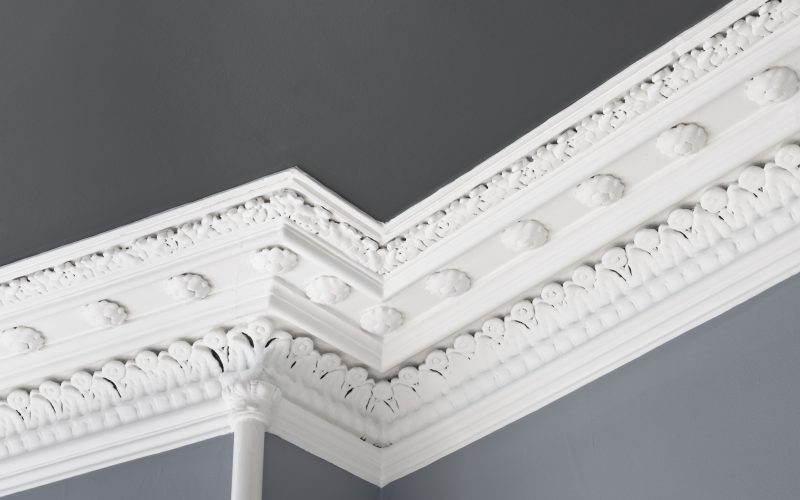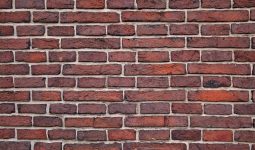Trims are small details that can make a big difference in the appearance of your home.
Some trims are metal, while others are made of natural elements like leather or stone.
Whichever type you choose, trimming your home will require finesse and an eye for detail.
The following list lists the most common types of trim and describes some examples of how to use them to spruce up your house.
What Are Trim?
Trim is a type of molding used to decorate the edges of surfaces. It can be made from wood, plastic, or metal.
Common types of trim include baseboard, chair rail, and crown molding. Trim can be used indoors or outdoors.
Different Types of Trim to Use at Home
1. Piping
As a homeowner, you probably know that there are many types of trims that can enhance the appearance of your property. One type of trim that you may not be familiar with is piping.
Piping is a type of trim that adds visual interest and contrast to your home.
It is typically made from various materials, including plastic, metal, or wood.
Piping is a type of trim that adds visual interest and detail to your home.
It comes in various materials, colors, and sizes, so you can find the perfect option to complement your home’s style.
Plus, piping can be used in multiple ways, from accenting furniture to trimming windows and doors.
Here are some of the most popular types of piping:
- Valance: A valance is an ornamental fabric strip that hangs from the top of a window frame. Typically, valances have an inward curve on either side, providing privacy while allowing light into the room. Valances come in a variety of styles and shapes – even vertical strips! – so they’ll match any window treatment design theme
- Split casing: A split casing is another type of decorative window trim. Like other casings, it extends over the hardware on window treatments like curtains and blinds. The difference between this type of trim and others is that it splits into two parts at a seam right below the window sill instead of being solid across the front.
2. Scallop Edge
A scallop edge is yet another type of trim to spruce up your windows.
Scallops are traditionally seen as feminine, but don’t let that stop you if you’re looking for something more masculine!
The scallop edge adds depth and dimension to whichever surface it’s added to, whether chairs or doorways.
Whether you’re looking for something subtle or eye-catching, there’s bound to be a trimmable solution waiting for you!
3. Banding
Banding is a type of trim that can add visual interest to a room. It’s usually made from a material different from the rest of the frame, and it can be used to create patterns or contrast.
Banding can be used on walls, ceilings, floors, furniture, etc.
4. Beadboard
Beadboard is a type of trim often used on walls and ceilings. It’s made from narrow strips of wood joined together with grooves, and its textured surface can add visual interest to a room.
5. Edge Trims
Edge trims are a great way to add a finishing touch to any room. They can cover up rough edges, add color or pattern, and even create the illusion of a bigger space.
Plus, they’re easy to install and come in various materials.
Here are some of the most popular types of edge trims:
- Fabric-edged trim—Fabric is one of the more versatile and affordable options for adding an edging detail to your home. Use adhesive tape to place it over an existing ledge on your wall or window, trim off any excess fabric, and then hang it as you would any other picture frame!
- Stenciled wood trim– Try stenciled wood trim for a design that stands out against dark walls. It will give your home’s décor a rustic feel while being contemporary enough for today’s tastes.
- Metallic painted trim: If you want something more traditional but still modernized with today’s trends, metallic painted trim is an excellent choice! Many colors are available, so you can choose one that best suits your décor.
6. Cornices
Cornices are one of the most popular types of trim because they can be used in various ways.
They can frame windows or doors or act as accent pieces above cabinets.
Cornices are available in various materials, including wood, plaster, and polyurethane.
Depending on your needs, they come in multiple styles, from simple to ornate.
7. Crown Moldings
Crown moldings are a type of trim installed where the ceiling and walls meet.
They come in various styles and can be made from different materials, such as wood, plaster, or foam.
Crown moldings can add a touch of elegance to any room and can be painted or stained to match your existing décor.
They can be a great addition to an older home without crown moldings.
However, they can also be time-consuming and costly to install if you don’t do it yourself.
If you decide to go with a professional, ask friends and family for referrals.
They may even know ways to reduce costs without sacrificing quality.
Also, you will need to do some research before deciding whether crown moldings are suitable for your home.
One sure thing is that these trims add elegance, whereas there was once only blank wall space.
8. Chair Rails
Chair rails are among the most popular types of trim. They can protect walls from scuffs and scratches or add a decorative touch.
Chair rails are available in various materials, including wood, plastic, and metal.
Wood is often chosen for its durability, while metal is usually more expensive and attractive.
9. Plinth
Plinth blocks are one type of trim used to add visual interest and dimension to your home.
They are installed at the base of columns or doorways and can be made from various materials, including wood, stone, or metal.
Plinth blocks can be simple or ornate and used to create various looks. If you’re looking for a way to add extra interest to your home, consider using plinth blocks as a type of trim.
10. Beading
Beading is a type of trim that can add detail and interest to various home décor projects.
It’s available in multiple colors, styles, and sizes, making it a versatile option for many different applications.
Beading can trim furniture, walls, windows, and more. Here are some tips on how to use a beading to spruce up your home:
- Beading can be glued or nailed onto the surface you want to embellish. A professional carpenter or another qualified tradesperson may be needed for large pieces.
- Before applying any glue or nails, check with your local hardware store or general contractor about what types are safe for the project you’re working on.
- When choosing which kind of bead to buy, remember that glass beads will produce a more opaque look, while metal beads will create a shinier finish.
11. Cove Base
Cove base is a type of trim often used in rooms with heavy foot traffic, such as kitchens and bathrooms.
It’s easy to clean and can withstand moisture, making it an excellent choice for high-traffic areas.
Plus, it adds a touch of elegance to any space. Cove base might be the way to go if you’re looking for an affordable alternative to crown molding.
12. Reversible Cornice
Reversible cornices are among the most versatile types of trim. They can add a touch of elegance to your home or create a more rustic look.
Plus, they’re easy to install and relatively inexpensive. Here are some other types of trims you can use to spruce up your home
13. Baseboard Moldings
Baseboard moldings are among the most popular types of trim because they add a touch of elegance to any room.
They can be made from various materials, including wood, plastic, and metal.
There are many styles to find the perfect look for your home. Baseboard moldings are easy to install and can be found at most home improvement stores.
If you’re looking for more than just trim work, adding baseboard molding will help create a cohesive and stylish finished space.
The width of baseboard molding ranges from 1 inch to 3 inches; typically, about 2 inches is used in standard applications such as bedrooms or bathrooms.
Many people have questions about how much baseboard trim is needed.
The answer varies depending on where it’s installed and other items in the room.
There should be at least two rows on either side of each doorway into a room, if not more, depending on what type of trim detail you prefer.
14. Creeping Jenny Molding
Creeping Jenny molding is a type of trim that can add interest and dimension to your home.
It’s named after the plant it resembles and is a popular choice for many homeowners.
This type of trim can be used on the interior and exterior of your home, and it’s easy to install.
Plus, it’s relatively inexpensive, so it’s a great option if you’re on a budget.









It’s great that you mentioned how trims are small details that could make a big difference in the appearance of your home. I think our house looks a bit too plain right now, so we are thinking of remodeling it. We want to have more details in our house, so we should probably ask for a trim installation service.